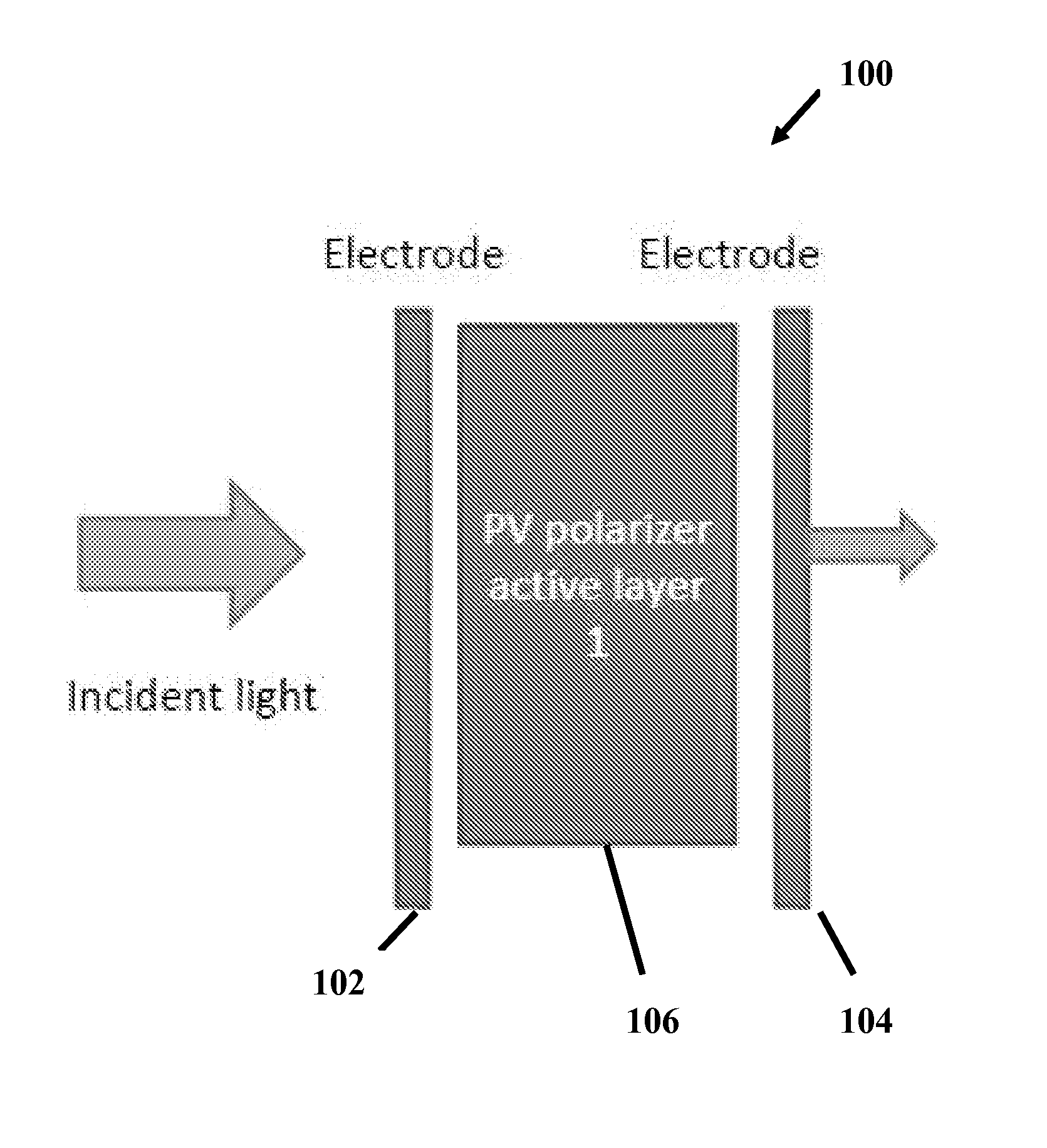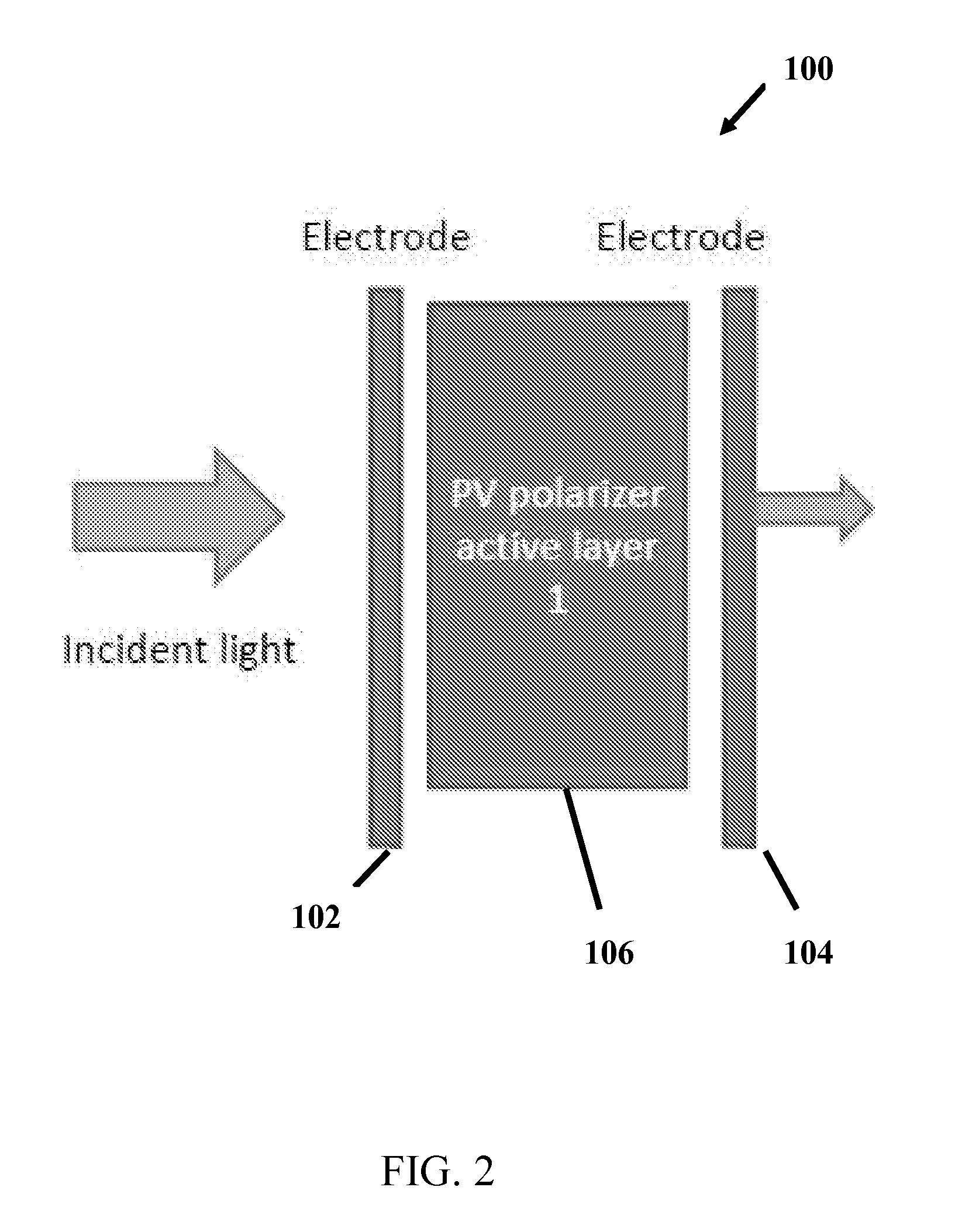Polarizing photovoltaic devices and applications in LCD displays and tandem solar cells
- Summary
- Abstract
- Description
- Claims
- Application Information
AI Technical Summary
Benefits of technology
Problems solved by technology
Method used
Image
Examples
example 1
[0036]To solve the problem of energy waste in conventional LCDs, as mentioned in the Background, we present here the use of polarizing photovoltaic cells for recycling energy from the backlight. Traditional polarizing filters in LCD systems can be replaced by the polarizing photovoltaic cells, as is illustrated schematically in FIG. 5. The polarizing photovoltaic cells not only act as polarizing films to provide linearly polarized light, but instead of simply blocking the light, they absorb it and convert it into usable power which can be fed back into the system, hence increasing the overall efficiency of the system as a whole. FIG. 5 shows an example of LCD system according to an embodiment of the current invention that includes polarizing photovoltaic cells. When the isotropic light reaches the first polarizing photovoltaic film, the light portion with axis parallel to the molecular orientation of the first polarizing photovoltaic film will be absorbed. This portion of light ener...
example 2
[0070]The polarizing organic photovoltaic device will be referred to as ZOPV instead of POPV (polymer organic photovoltaic). Compared with their silicon or other inorganic or organic-inorganic hybrid counterparts, a unique advantage of organic conjugated materials is that the molecular chains can be easily oriented, leading to anisotropic response to polarized incident light. This feature can make the organic PV system superior to the inorganic PV system for PV polarizer purposes. ZOPV devices integrated into an LCD panel (FIGS. 10A, 10B) can have three potential benefits: 1) polarization, whereby the EM wave component with an electric field perpendicular to the oriented molecular chain (s-mode polarized light) propagates through the film without absorption, serving its conventional role in LCDs; 2) As a PV device, the ZOPV film harvests the EM wave component parallel to the molecular chain orientation (p-mode polarized light, which is absorbed and wasted in a conventional LCD), con...
PUM
| Property | Measurement | Unit |
|---|---|---|
| Ratio | aaaaa | aaaaa |
| Transparency | aaaaa | aaaaa |
| Wavelength | aaaaa | aaaaa |
Abstract
Description
Claims
Application Information
 Login to View More
Login to View More - R&D
- Intellectual Property
- Life Sciences
- Materials
- Tech Scout
- Unparalleled Data Quality
- Higher Quality Content
- 60% Fewer Hallucinations
Browse by: Latest US Patents, China's latest patents, Technical Efficacy Thesaurus, Application Domain, Technology Topic, Popular Technical Reports.
© 2025 PatSnap. All rights reserved.Legal|Privacy policy|Modern Slavery Act Transparency Statement|Sitemap|About US| Contact US: help@patsnap.com



